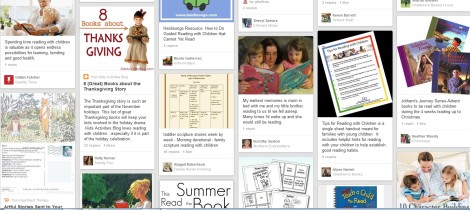This article is part of the 31 Days of Pinterest Hacks series. Find the main page for this series here.
This post will help you build story-sharing into the day so you can relish in books with the child.

You can find thousands of ideas for reading with a child. When sharing stories with a neurodivergent or disabled child, there are things you can do to warrant the child’s attention.
Why books and stories may be a challenge for neurodivergent and disabled children
Because listening to stories is primarily language-based, some children will require extra support.
- Children with receptive language difficulties may not comprehend the words.
- Children diagnosed with ADHD may not be able to stay with the story long enough to interpret the message of the story fully.
- Children with auditory discrimination difficulties may not hear the differences in some sounds.
Suggested adaptations/modifications for sharing books and stories
- Offer a variety of books. Own a little collection of books and have them readily available. If the child tends to mouth the books, invest in fabric books and keep those out for them to play with. Store the others for when you can supervise.
- Familiarize yourself with good/developmentally appropriate books and stories. Have a handful of good quality, developmentally appropriate books available. Some of the best books to begin sharing are cumulative and repetitive books. Think: This is the House that Jack Built (cumulative) and Green Eggs and Ham (repetitive).
- Memorize stories for telling. Connection comes from telling a story without reading directly from the book. In putting the book down, you are forced to look at the child and use your own words. I like to memorize the general idea of the story, as well as the repetitive/cumulative phrases, but I fill in the rest with my own narration and dialogue. Without fail, I grab my son’s attention. It’s magical to carry a story in your heart because you can make it your go-to tool when you are out and about!
- Retell the same story daily over a span of time. When you have many books available, you might feel tempted to read/tell a new one each day. The only way to foster a love for stories is by keeping them familiar. Think about your personal favorites when you were growing up. Over time, you will not only become a better storyteller (since you’re retelling the same story daily), but the child will learn language patterns and begin to anticipate what comes next (among a slew of other early literacy skills).
- Where you sit isn’t important. You don’t need to be sitting at all. You might decide that you want to designate a chair for storytelling, but if the child engages in a power struggle when you try to get them to join you—forget that chair. I like to have my son close to me, but it’s not always possible. Most days, I tell the stories while he’s playing on the floor. He plays a little; he listens a little. Sometimes, he doesn’t listen at all. I keep going right through to the end while he continues playing. What’s important is that he hears the familiar language over time.

This was the reading nook I had set up, thinking I’d be reading here daily with my little guy. Not even the best books on the shelf and the coziest rocking chair can be motivators if the child won’t have it. Follow their lead and ditch the chair if you have to.
- Use props. Tell the story using props as visuals. There is no need to get high-tech about it. A stuffed toy, a doll, a few blocks and a basket can all make great props for your fabulous story.

I keep a basket with props for the story I’m telling that week in a central location.
- Include the usual system of communication in the story. Whether the child uses ASL or AAC, include those as you tell the story.
- Don’t ask questions. Don’t interrupt a terrific story with questions. Just tell the story. Let the child internalize it. Let them hear the tones and rhythms. Let them see your facial expressions. At this point, you’re not testing for comprehension. This is simply about exposure to books and stories so that the child will begin to understand that stories contain meaning.
- Find audiobooks. You can purchase (or download free) audiobooks that you can play at particular moments in the day. I play them when I need a little break, like after lunch or dinner while cleaning up. My son sits in his adapted seat and absorbs the rhythms of the language. Be sure to listen to the recordings ahead of time as you don’t want surprises with sounds that might cause a child discomfort.
How do you share books/stories? What strategies work for you?
Early literacy is a huge category that cannot be fully discussed in one article. We can work together if you’d like a more in-depth look at helping a child gain an interest in stories or selecting developmentally-appropriate books.
Literature Resources
- BookOutlet– (Affiliate link) Discounted books for the entire family!
Related Articles

0 Comments